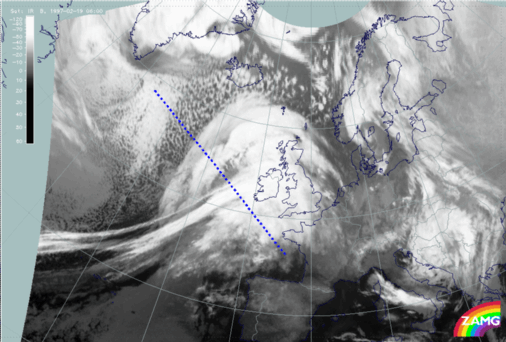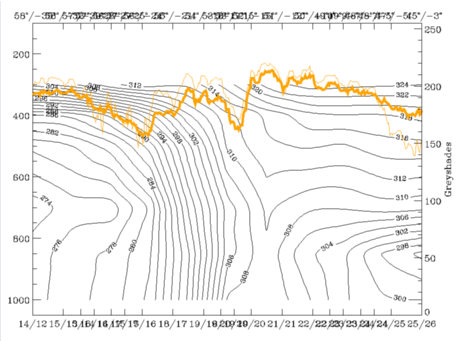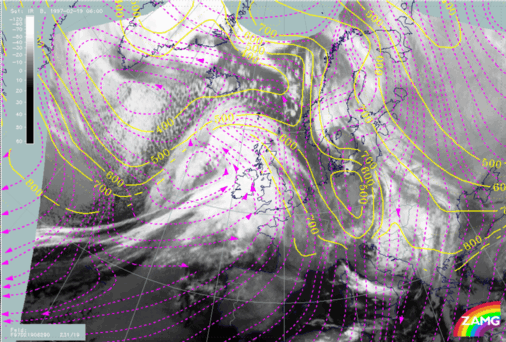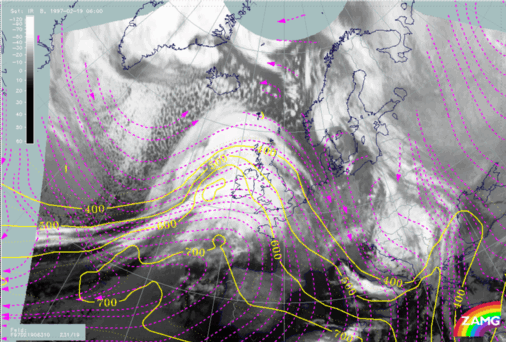19 FEBRUARY 1997 - RELATIVE STREAMS AND CONVEYOR BELTS FOR RAPID CYCLOGENESIS 06.00 UTC
by ZAMG
|
19 February 1997/06.00 UTC - Meteosat IR image; position of vertical cross section indicated
|
19 February 1997/06.00 UTC - Vertical cross section; black: isentropes (ThetaE), orange thin: IR pixel values, orange thick: WV pixel values
|

|

|
|
19 February 1997/06.00 UTC - Meteosat IR image; magenta: relative streams 290K - system velocity 231° 19 m/s, yellow: isobars
|
19 February 1997/06.00 UTC - Meteosat IR image; magenta: relative streams 310K - system velocity 231° 19 m/s, yellow: isobars
|

|

|
Summarizing, one can say that even in cases where a complicated structure with several conceptual models superimposed exists, an evaluation and estimation of all relevant key parameters helps to localize and separate the single conceptual models. This is the basis for a useful Very Short Range Forecast (compare Very Short Range Forecast).


